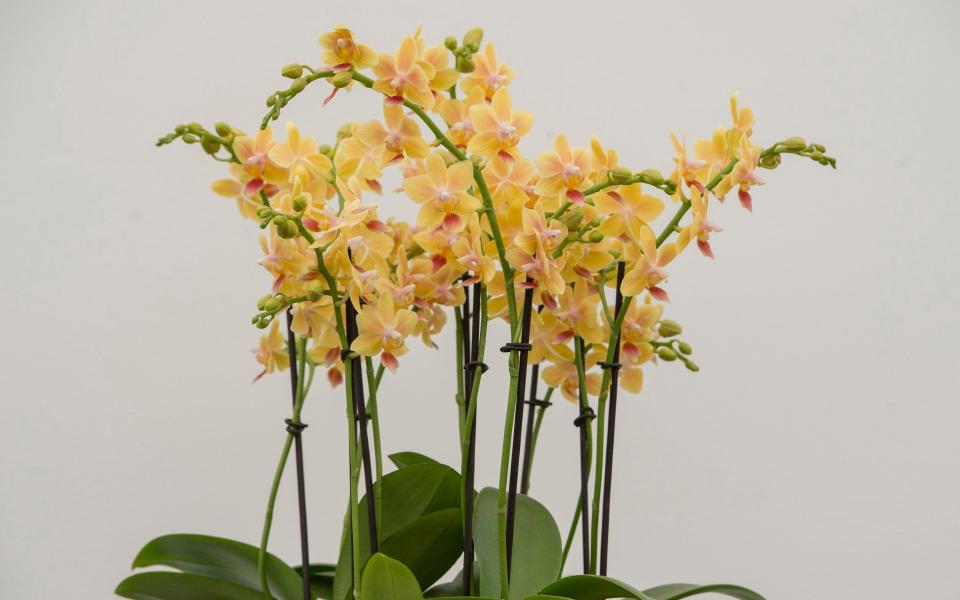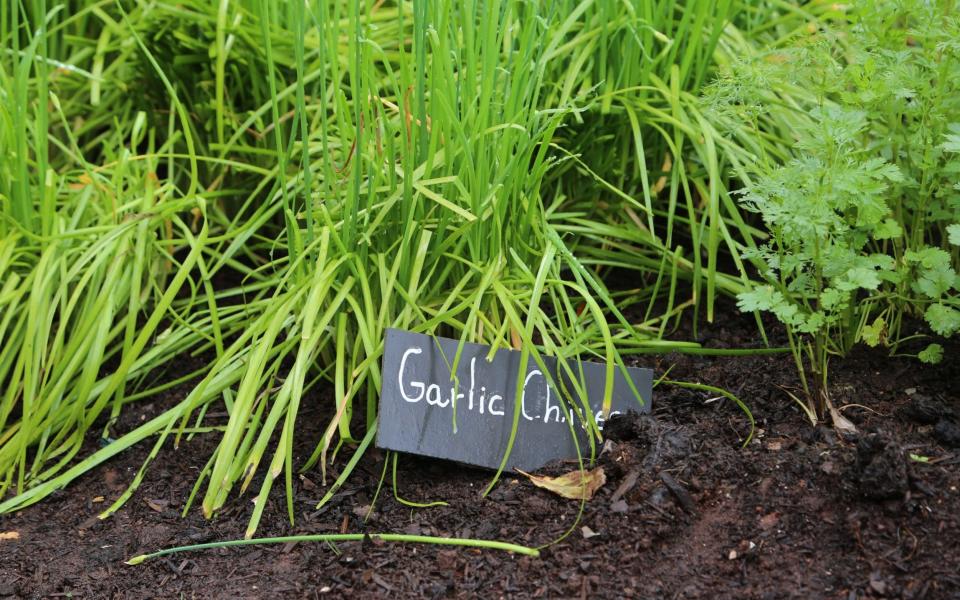Gardening in December: what to plant and tidy in your garden this month

Did you think December was just for carols and present-opening? Turns out, there are plenty of gardening jobs to keep you busy during the festive period, from protecting plants from frost to smaller things, like hinting for gardening Christmas presents. Get stuck into these jobs and feel relaxed and ready to take on January.
Check fruit
Check stored fruit and vegetables for signs of rot and promptly dispose of any affected.
Stock up
Stake or earth up Brussels sprouts to prevent wind rock. Continue harvesting kale, parsnips, leeks and Brussels sprouts.
Prune edible vines
Midwinter is the best time to prune edible and ornamental vines to prevent bleeding of the sap from the cut stems.
Orchids

Orchids such as Phalaenopsis and poinsettias (Euphorbia pulcherrima) require a minimum temperature of 16-19C (60-66F), but do not position them close to radiators, open fires or draughts.
Insulate outside plumbing
Store watering attachments indoors or make sure they are drained.
Clear debris
This is vital to prevent slugs and snails from setting up home in those lovely warm and damp conditions.
Tidy up the shed
Tidy up sheds and clean pots and trays making them ready for the next season.
Watch out for fuzzy grey mould
Leaves of winter-flowering pansies that can be symptoms of downy mildew. Affected leaves will gradually die. There is no chemical treatment. Remove infected leaves as soon as the discolouration appears.
Apply dry mulch such as chipped bark around borderline-hardy plants such as agapanthus, phygelius, hedychium and melianthus to protect the crown.
Remove spent fruit
During winter pruning do not forget to remove mummified fruit that remained on branches, ideally together with a short piece of the spur to which they are attached.
Force winter herbs

To enjoy fresh garnish in winter bring container-grown herbs such as chives and mint indoors for forcing on the windowsill.
Plant gifts
Prevent Christmas gift plants such as azaleas, Christmas cacti and indoor cyclamen going rapidly over by keeping them cool at 13-15C (55-59F). In particular, forced bulbs such as daffodils and hyacinths require lower temperatures.
Protect pots
December’s freezing weather can be testing. Protect pots with bubble plastic (e.g. agapanthus), or bring them under temporary cover. The “rain shadow” of walls can be sufficient protection from frost.
Feed the birds
Although they benefit from having food put out for them all year round, birds need a high-fat boost to their diet during the winter. Feed regularly so they will not waste vital energy visiting your garden when there is nothing for them.
Plant a rose hedge
For some welcome winter colour, plant an informal rose hedge if the weather is not freezing. Most wild species and their cultivars produce glowing red fruits or hips.
Take on a new allotment
Now is the ideal time for clearing and preparing the ground for early planting and sowing.
Wage war on aphids
Some species remain active in mild winters or on indoor plants. But most overwinter as eggs, often on dormant deciduous fruit trees and bushes. These can be treated with a plant oil winter wash.
Bag a Christmas tree
Choose from a cut, container-grown or containerised specimen. They are generally problem-free indoors, but will lose their needles quickly if placed too close to a heat source, or if their water dries up. Those grown on in pots may only live for a few years – they are not naturally suited to permanent pot cultivation.
Buy a cold frame or mini-greenhouse

These are useful for growing a range of edible crops and overwintering young annuals and other plants, or shielding alpines from the rain.
Move shrubs
If you want to move established deciduous trees or shrubs to another part of the garden, now is a good time. Choose a calm, dull day to help prevent roots from drying out.
Get pruning
Check recommended times for pruning trees, shrubs and climbers. Prune ornamental and edible grape vines, hornbeam, walnut, mulberry and, if necessary, maple and birch before Christmas to prevent bleeding from pruning cuts.
Choose your mail order plants. Annuals, perennials and summer-flowering bulbs are delivered in spring so seek inspiration now, either online or in catalogues.
Patio pots and containers
Sow: Broad bean 'The Sutton’.
Sunny porch, lean-to or unheated greenhouse (mini or large)
Sow: Salad leaf mixtures as cut-and-come-again: 'Mixed Spicy Salad Leaves’, 'Mustard Colour and Bite’ or 'Leaf Salad Winter Mix’.
Polytunnel
Sow: Broad bean 'Valenciana’, mangetout pea 'Bijou’ (huge pods), oriental greens mibuna and mizuna and salad rocket.
Don't forget about your vegetable patch
Sow: Broad bean 'Super Aquadulce’.
Plant: Cloves of autumn planting garlic 'Messidrome’, 'Provence Wight’ or 'Germidour’ and shallots 'Griselle’ or 'Yellow Moon’. Place orders for seeds and seed potatoes.
Shrubs to create winter interest
Wintersweet (Chimonanthus praecox) is renowned for its sweet scent, but shrubby honeysuckles such as Lonicera x purpusii and L. fragrantissima and Sarcococca confusa or S. hookeriana are a good match. To enjoy the sweet scent, plant the shrubs close to the front door or paths.
The bright yellow flower spikes of Mahonia x media cultivars such as 'Charity’, 'Lionel Fortescue’, 'Winter Sun’ and 'Buckland’ will make an impact during dull days. Also the red flushed leaves of Nandina domestica 'Fire Power’ or golden foliage of Choisya x dewitteana 'Goldfingers’ could add interest to winterborders.
Algae, lichens and moss on trees and shrubs
Inquiries to the RHS Members’ Advice Service at Wisley are often from gardeners who mistake algae, lichen and moss for fungal diseases on trees and shrubs.
These harmless plantlike organisms are especially obvious on bare branches during winter, and are unjustly blamed for the poor condition of affected plants, because they are often found on those lacking in vigour or already beginning to die.
Although they colonise neglected and overcrowded trees and shrubs, they don’t hinder growth and development, and are good for wildlife and biodiversity.
Algae form green powdery deposits, especially on the shady side of tree trunks and leaves of evergreens and are easily removed if unwanted. To restore dazzling brightness to white-barked birches, for example, scrub off algal deposits with clean water and a soft scrubbing brush.
Mosses can form bright green to yellowish tufts or cushions on trunks or branches.
Lichens are mainly silvery-grey to green crusty patches or hanging and branching growths. Preferring damp, clean air and minimal air movement they are common in rural districts and mature gardens. They can also be found on the side of tree trunks facing prevailing wind and rain and on plants in humid areas, especially western parts of the UK where they form a natural part of the garden ecology.
With no chemical controls, reduce unwanted algae, lichen and moss by improving air circulation. Pruning out congested branches or removing overhanging vegetation should help, too.
Stimulate new vigour in affected plants by mulching with a thick layer of organic matter and using a balanced fertiliser in the spring.

 Yahoo Movies
Yahoo Movies 